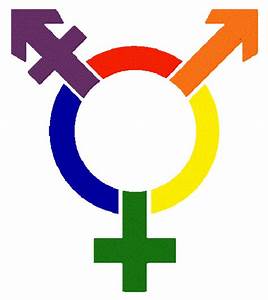“The Truth will make you free” (John 8:32):
Introduction
The difficulties and challenges facing young people living in present-day Canadian society are vast and their impact is disturbing. For instance, research indicates that 32% of children in Canada between the ages of 11 and 15 experience two or more symptoms of distress every week, such as headaches, stomach pain, or insomnia. Moreover, suicide is the second leading cause of death for young people in Canada between the ages of 15 and 24 and the leading cause of death for children aged 10-14.1
Within this era of much distress experienced by children and youth, the problem of gender incongruence (GI), that is, a difficulty or refusal to accept one’s own biological sex, is steadily increasing. Children or youth who identify as transgender believe they are members of the opposite sex. For instance, a biological male may identify as a female and believe that he is actually “a girl trapped in a boy’s body”. Or a child/youth who identifies as non-binary is under the impression that he or she is neither male nor female. This troubling phenomenon poses a particular challenge to faithful Catholics as they may wonder how they can effectively engage children/youth experiencing gender confusion while concomitantly proclaiming the Church’s sublime view of the human person and human sexuality.3
In this article the author employs the See-Judge-Act method as a means of understanding and responding to GI, particularly as it pertains to children and youth. This method, as a guiding principle within the rich tradition of Catholic Social Teaching, was developed by the Belgian Cardinal Joseph Cardijn (1882–1967).3
See
During the past decade, various claims and questions regarding “gender identity” have become more widespread throughout Western nations. This has contributed to significant changes in how children and youth perceive themselves, particularly in terms of how their sense of being male or female is aligned with their biological sex. For instance, a 2022 study revealed that 43% of people in the US who identify as transgender are below the age of 25 – such identification in this demographic has doubled since 2017.4
Moreover, in 2021 the journal Pediatrics stated that over 9% of high school students identified with a gender other than their sex, a substantial increase from a 2017 study by the Center for Disease Control which indicated that approximately 2% of high school students identified as transgender. Other nations such as Canada, New Zealand, Finland, and the Netherlands have, in recent years, also reported substantial increases in young people experiencing GI.5, 6
There may also be sex-based differences amongst children and youth who experience GI. For instance, a recent (2023) article explains that in 2018 it was reported in the UK that the number of young females living in that country who deemed themselves transgender increased by over 4000% in less than ten years.7 This is not to suggest that a substantial number of male children/youth are not experiencing GI, but young females may be especially prone at this time.
When considering the rates of GI outlined above and in any other study, it is important to note that the statistics tend to “lag behind reality”. In other words, given the persistent growth of GI it is safe to assume that reported rates underestimate its actual presence in the population.8 Nevertheless, such research does promote a better understanding of the nature and prevalence of this problem.
There are reportedly disproportionate rates of contemplating and attempting suicide amongst youth who experience GI.9 However, it should be noted that the belief that youth who experience GI are at a relatively high risk for suicide is often based on online surveys that do not report accurate estimates of the population because they rely on convenience samples.
Furthermore, such surveys are unable to distinguish between GI and other mental health comorbidities that frequently occur within this population and which could also increase the likelihood of suicidal thoughts and behavior.10
For instance, in a study of patients at the gender clinic in Toronto’s Sick Children’s Hospital researchers found that 78.8% reported more than one mental health problem. Depressive disorders were reported by 40% and anxiety disorders by 44.3%.11 Other common comorbidities detected amongst youth with GI are eating disorders and autism spectrum disorder.12
In conjunction with the aforementioned recent increase in the rate of children and youth who experience GI, a psycho/social/medical response framework known as so-called “gender-affirming care” (GAC) has been implemented. The standard GAC framework consists of four stages for young people with GI. These stages are social transition, puberty blockers, hormone therapy, and medical transitioning. Social transition includes taking on the name of someone of the opposite sex as well as adopting a “preferred pronoun.” It may also include using a washroom, wearing clothing, and assuming an appearance that aligns with one’s subjective sense of gender rather than his or her biological sex. It can also consist of appearance-altering practices such as breast-binding and genital (testicle) tucking.13
Social transition is often followed by using puberty blockers which disrupt the process of sexual maturation. The purpose of these blockers is to impede the body’s natural trajectory of masculinization or feminization in order to prepare for subsequent bodily changes that mimic the secondary sex characteristics of the opposite sex. For a male these changes could mean the development of female sex characteristics such as breasts and a lower hip-waist ratio. For a female this includes the development of facial hair, a lower voice, and greater muscle mass.14, 15 These and other related bodily changes transpire through hormone therapy (i.e., cross-sex hormones). Further changes resulting from surgically removing reproductive organs and reconstructing genitalia may also occur – this is referred to as medical transitioning.16
Judge
In order to understand the disturbing phenomenon of GI amongst children/youth, as well as related developments such as GAC, it is necessary to highlight Catholic doctrine and anthropology. To begin, the Church teaches that the human person is a unified being created in the image and likeness of God and composed of a body and a soul. Although the soul is the spiritual principle of each human person and is the subject of human consciousness and freedom, it is vital to recognize that the body and soul of each person are intimately united; thus, the human person is not a soul or mind whose body is a mere attachment. Moreover, although we can distinguish between biological sex and the socio-cultural role and expression of sex (i.e., gender) they should never be separated.17
This is in stark contrast to the erroneous gender theory (GT), a contemporary and influential thought system that justifies and may very well perpetuate GI. Proponents of GT assert that gender identity is markedly distinct from the biological differences between males and females. Thus, gender identity is deemed as something based on the perception of the individual and one that can legitimately change over time – perhaps even repeatedly.18
In the Sacred Scriptures we read that “God created man in [H]is image, in the divine image [H]e created him; male and female [H]e created them” (Gen 1:27). Thus, the Catholic perspective views the biological sex of a person, manifested by his or her body, as a gift from God and unchangeable.19
As the Catechism of the Catholic Church (CCC) states in section 2333:
Everyone, man and woman, should acknowledge and accept his sexual identity. Physical, moral and spiritual difference and complementarity are oriented toward the goods of marriage and the flourishing of family life. The harmony of the couple and of society depends in part on the way in which the complementarity, needs and mutual support between the sexes are lived out.20
Clearly, the Catholic view of the person informs us that GI is not in accord with human flourishing for it is rooted in a denial of one’s God-given sexual identity. Hence, it is unsurprising there is substantial evidence that the aforementioned GAC is also harmful from a medical perspective.
For instance, common symptoms arising from breast-binding are back pain, shortness of breath, and light-headedness. It can also result in rib damage, spinal misalignment, and fluid buildup in the lungs. Problems linked to the tucking of testicles include rash, skin infection, and pain. Testicular torsion, or the twisting of the spermatic cord, is a rare but very serious complication related to tucking that may require removal of the testicles. It should be noted that some so-called “Gay-Straight Alliance” (GAC) clubs in schools assist gender-confused students in obtaining harmful breast-binding and testicle-tucking products without their parents’ knowledge. 21
As for pubertal suppression hormones, research indicates they not only thwart the development of secondary sex characteristics, but they can also stymie bone growth, decrease bone mineral density, prevent brain development and inhibit fertility. Cross-sex hormones can also have harmful effects. For instance, oral estrogen administered to boys may cause cardiovascular disease, high blood pressure, gallbladder disease, and breast cancer. And testosterone administered to girls may negatively affect their cholesterol levels, increase their levels of homocysteine (a risk factor for heart disease), cause an excess of red blood cells, and increase the likelihood of sleep apnea.22
As noted above, the GAC framework also calls for surgical interventions which involve the removal of natural genitalia and the construction of artificial genitalia. These mutilative procedures, also referred to as medical transitioning, are costly, irreversible and can render people sterile.23 Not every gender-confused person undergoes so-called “bottom surgery” but those who do will have a lifelong dependency on artificial hormones. Moreover, the medical complication rate for an invasive procedure such as a phalloplasty (i.e., construction of an artificial penis) is extremely high.24
Proponents of GAC may assert that youth with GI should “transition” so as to prevent them from committing suicide, but such a recommendation is factually inaccurate and gravely immoral. For instance, in 2016 a meta-analysis of over twenty studies determined that the prevalence of suicide remains high for gender confused persons who undergo so-called “sex reassignment surgery”.25 Moreover Ayad et al. (2022) report that neither hormone treatment nor surgical interventions aligned with GAC have been found to reduce suicidal behavior and a long-term study from Sweden found that people who underwent surgery in an attempt to be the opposite sex were more likely than their age-matched peers to commit suicide.26
Questions remain pertaining to what factors lead to GI and recent research suggests that, for a substantial number of young people, GI is impermanent and resolves in adulthood.27 For instance, Hruz recently (2023) explained that “empirical observation [reveals] that the majority of pre-pubescent children who [experience] gender dysphoria [undergo] spontaneous realignment of gender and sexual identity.”28
For those children and youth who experience GI, it is essential they are treated with respect and charity and that ample efforts are made to prevent them from being subjected to cruel insults or bullying. The Catholic faithful, including priests, pastoral ministers, and educators are called to journey with these young people and their families in a spirit of genuine charity. Naturally, this spirit of genuine charity must be exercised in the light of Christ’s truth or it is ultimately uncharitable. 29 As St. Teresa Benedicta of the Cross (St. Edith Stein) teaches, “Do not accept anything as the truth if it lacks love. And do not accept anything as love which lacks truth! One without the other becomes a destructive lie.”30
Act
When approaching the steadily increasing problem of GI, this author recommends that Catholics and other people of goodwill employ a Catholic view of the human person known as whole-person affirmation (WPA). By doing this, they will actively promote the Gospel and natural law rather than just reacting to the contemporary false narrative, based on GT, which places so much emphasis on a subjective sense of gender identity.31
The WPA model is predicated on affirming the belovedness of every person. Thus, it is vital that young people are consistently told that they are infinitely loved by God as He wills their existence and delights in them. The goodness and sacramentality of the human body is also affirmed and our biological sex, which reveals our personhood, is a gift to be celebrated, not an obstacle to be avoided, changed, or replaced.32 Traditional masculine characteristics and behaviors should be encouraged and cultivated in males and the same holds true for traditional feminine characteristics and behaviors among females.
There are very real differences between males and females and these can be detected in utero or during gestation, including differences in size, responsiveness to environmental stimuli, and brain development. These God-given differences greatly contribute to the aforementioned complementarity between the sexes throughout the lifespan.33 In short, female human beings have the innate capacity to generate life within while male human beings have the innate capacity to generate life in another. 34
Along with sex-based differences, the WPA model also affirms the uniqueness of individuals.35 Genetic and prenatal hormone factors vary within the sexes and this contributes to the tendency of some males being more aggressive and others being gentler – likewise with females, but such temperamental differences do not mean that a gender nonconforming child is actually “a boy trapped in a girl’s body” or vice-versa.36 Nevertheless, within the contemporary culture a young person who does not exhibit stereotypical gender behaviors and attitudes may quickly identify as transgender or non-binary.37
Thus, children and youth should be encouraged to discover and develop their unique gifts and personalities. The Catholic tradition is replete with holy saints who lived out their call to love God and others in a variety of ways, and some of them did not conform with gender stereotypes. For instance, there are female saints, such as Teresa of Avila, Joan of Arc and Catherine of Sienna, who exhibited what some may call more masculine characteristics, while the male saint Nunzio Sulprizio might be considered to have more feminine attributes due to his caring and harmonious personality. Nevertheless, their sense of gender was congruent with their God-given biological sex. 38, 39, 40
Given that the WPA perspective recognizes that gender is grounded in biological sex rather than cultural stereotypes, it acknowledges a certain freedom in how maleness and femaleness are lived out in the world.41 Nevertheless, true freedom is grounded in reason-based parameters – including linguistic parameters, that correspond with genuine flourishing.
As noted above, social transitioning for youth experiencing GI can include adopting a so-called “preferred pronoun” (e.g., a biological female may want to be referred to as “he”, “they”, “zie”, or “zir”). Recall that section 2333 of the CCC explains that we are called to gratefully acknowledge our God-given sexual identity. Hence, it is clearly immoral to cooperate with a person’s objectively disordered thinking and address him or her with a preferred pronoun which is false. To do so would contradict the Catholic view of the human person and would encourage others to do the same.
Intertwined with the moral unacceptability of promoting or cooperating with social transitioning is the ample evidence that it increases the likelihood of medical transition which, as delineated above, is disturbingly destructive. For instance, research indicates that for a large majority (approximately 80-85%) of children who experience GI, their confusion will eventually resolve so long as they are not socially transitioned. But a study in 2022 found that for 94% of young children who were socially transitioned, their gender confusion persisted into adolescence. This supports a 2013 study, whose authors concluded that social transitioning increased the likelihood of persistent confusion and subsequent medical transitioning.42
The positive view of embodiment emanating from the WPA, delineated above, also acknowledges the challenges of embodiment. The limitations and vulnerabilities of our bodies reveal our dependence on God and our need for His assistance as well as our interdependence on others. In our fallen world, we all experience a sense of disharmony between our intellects, our wills, and our desires and there are some who may involuntarily experience GI. Nevertheless, a sense of harmony and unity are found by relying on the grace of Jesus Christ. It is vital that this salvific reality is proclaimed – consistently and pervasively.43
Conclusion
As explained above, the Catholic perspective that human beings are born in the image of God, and by grace, re-born in His likeness, are either male or female is clearly in accord with revelation (see Gen 1:26, 27) and is buttressed by science.44 Nevertheless, proponents of GT are spearheading a fierce and noxious assault against the binary, biological-based perspective of the human person and so Catholics and others may face strong pressure to conform to GT’s disordered assumptions and norms. This can include deep-seated expectations to address others with false pronouns and be supportive of other forms of social and medical transitioning.
Given this contentious climate, it is hardly surprising that Archbishop Emeritus of Philadelphia, Pennsylvania Charles J. Chaput recently (2023) remarked that “[t]he most urgent challenge that Christians face in today’s world is anthropological: who and what a human being is…”.45 It is crucial that Catholics and other people of goodwill courageously and wholeheartedly face this challenge by unabashedly articulating the truth and dignity of the human person – this include a personal identity grounded in biological sex. In doing so, let us never forget that we do not face this challenge alone nor do we rely solely on our own efforts, for Our Risen Lord Jesus will assist us (see Jn 16:33).
The confusion, havoc, and harm that GT are wreaking upon our culture makes it obvious that many people are enslaved to its diabolical precepts. And the only remedy to this enslavement is Jesus Christ. It is in Jesus Christ, whose grace pours out through the sacraments -including the Most Holy Eucharist and the Sacrament of Confession, that all peoples everywhere find the truth. And as Jesus says, “…the truth will make you free” (Jn 8:32).
Sources
2 Source: Archdiocese of Toronto, Office of the Liaison for Catholic Education (Updated – 2020). “Speaking the Truth in Love”: Pastoral Guidelines for Educators Concerning Students Experiencing Gender Incongruence., p.1
3 Source: https://grassroots.caritas.eu/see-judge-act/ .
4 Favale, A., & Hruz, P.W. (2023). Teaching Human Dignity: The Philosophy & Science of Youth Gender Medicine., p. 5
5 Ibid.
6 Archdiocese of Portland (2023). A Catholic Response to Gender Identity Theory: Catechesis and Pastoral Guidelines for the Archdiocese of Portland, in Oregon., p. 1.
8 Hasson, Mary Rice (April 5, 2019). Presentation at Scholarly Conference entitled The Transgender Moment: A Natural Law Response to Gender Identity in Contemporary Culture. Sponsored by the Veritas Center for Ethics in Public Life. Franciscan University of Steubenville: Steubenville, OH.
9 Source: https://ottawacitizen.com/news/study-finds-suicide-rates-among-transgender-youth-at-crisis-levels .
10 Canadian Gender Report (2023). Supporting Gender Questioning Students in Canadian Schools Towards an Evidence-Based, Mental Health Focused Policy., p. 28.
11 Ibid., p. 25.
12 Ayad, S., D’Angelo, R., Kenny, D., Levine, S.B., Marchiano, L., & O’Malley, S. (2022). A Clinical Guide for Therapists Working with Gender-Questioning Youth: Version 1. Gender Exploratory Therapy Association, p. 30,
13 Archdiocese of Portland (2023), pp. 5-6.
14 Ibid., p. 6.
15 Source: https://en.wikipedia.org/wiki/Trans_woman .
16 Archdiocese of Portland (2023), p. 6.
17 Archdiocese of Milwaukee (n.d.). Catechesis and Policy on Questions Concerning Gender Theory, p. 2,
18 Ibid., p. 4.
19 Ibid., p. 2.
20 Catechism of the Catholic Church (1994). Ottawa, ON: Publications Service, Canadian Conference of Catholic Bishops.
21 Canadian Gender Report (2023), p. 17.
22 Source: https://www.lifesitenews.com/opinion/gender-confused-kids-need-therapy-not-puberty-blocking-drugs-new-study/ .
23 Lappert, Deacon Patrick. (April 6, 2019). Presentation at Scholarly Conference entitled The Transgender Moment: A Natural Law Response to Gender Identity in Contemporary Culture. Sponsored by the Veritas Center for Ethics in Public Life. Franciscan University of Steubenville: Steubenville, OH.
24 Canadian Gender Report (2023), p. 16.
25 Favale and Hruz (2023), p. 12
26 Ayad et al., (2022), pp. 29-30.
27 Archdiocese of Toronto, Office of the Liaison for Catholic Education (Updated – 2020), p. 2.
28 Source: https://catholicscientists.org/articles/a-scientific-appraisal-of-sex-discordant-gender-identity/ .
29 Archdiocese of Milwaukee (n.d.), p. 2.
30 Source: https://www.vatican.va/content/john-paul-ii/en/homilies/1998/documents/hf_jp-ii_hom_11101998_stein.html .
31Archdiocese of Portland (2023), p. 10.
32 Ibid.
33 Sodergren, A.J. (Paper Presentation, July 19, 2023). Becoming Man and Women: Development & Disorders of Sexual Identity. Ruah Woods Institute.
34 Favale and Hruz (2023), p. 7.
35 Archdiocese of Portland (2023), p. 11.
36 Zucker, K.J., Wood, H., Singh, D., and Bradley, S.J. (2012). A Developmental, Biopsychosocial Model for the Treatment of Children with Gender Identity Disorder. Journal of Homosexuality, 59, pp. 375-376.
37 MS Teams meeting, Rev. D. Adam, April 11, 2023.
38Archdiocese of Portland (2023), p.11.
39 Electronic Communication, Rev. P. Beneteau, July 14, 2023.
40 Source: https://grottonetwork.com/keep-the-faith/community/catholic-saints-myers-briggs/ .
41 Archdiocese of Portland (2023), p. 11.
42 Favale and Hruz (2023), p. 8.
43 Archdiocese of Portland (2023), pp. 10-11
44 Favale and Hruz (2023), p. 7.
45Source: https://www.firstthings.com/web-exclusives/2023/12/the-cost-of-making-a-mess .











